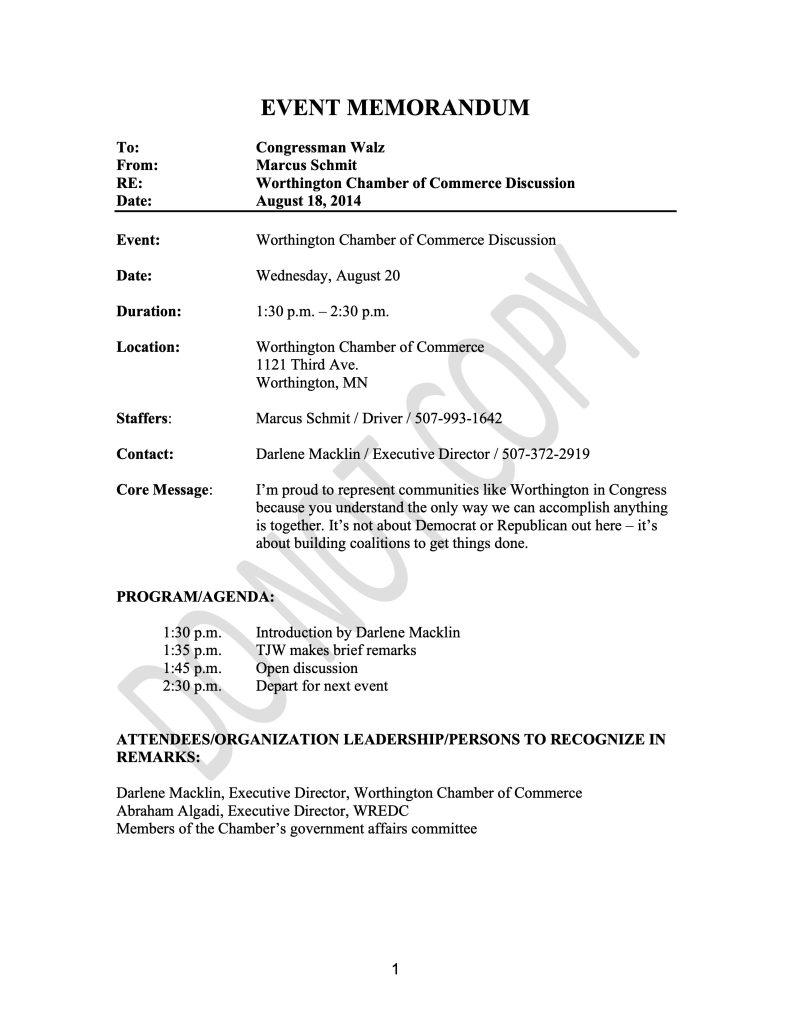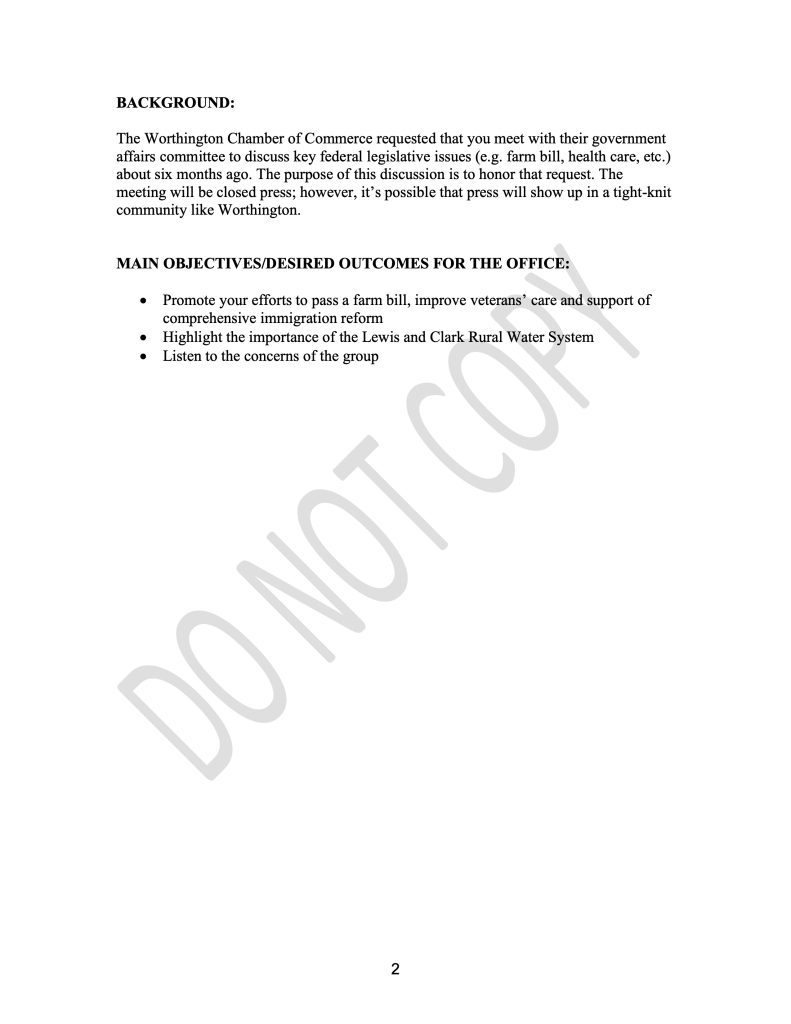Appendix D: What is a Memo?
I’m guessing you’ve probably heard of a memo (short for “memorandum”) but may not have given it a lot of thought as to what it is or how to write one. A memo is a short message that follows a very specific format. It is widely used in workplace environments, particularly in business and government. The purpose of a memo is to communicate information clearly and concisely to a specific audience. Generally memos are about providing information more than they are about persuasion. Most memos are very short (less than a page), but occasionally memos will be longer.
The format of a memo is very similar to the format you use when writing an email (the design of emails was modeled off of memos). At the top of the page, you will begin with four lines of text that are justified (lined up) along the left side of the page:
To:
From:
Date:
Subject:
In the “To” line, you should write the full name and job title of the person to whom you are writing. You’ll write the person’s name first, then a comma, then their job title.
In the “From” line, you will write your name and, if applicable, your job title.
The “Date” line should have a full date including the year.
The “Subject” line should provide a short, clear description of the contents of the memo.
Following this block of text, you will write your message. Rather than indenting each paragraph, simply put an extra line of space in between each paragraph. Try to keep your paragraphs short and concise. Remember that the goal here is to present the important information in a way that is easy to read and understand.
Because you’ve already indicated who the memo is written by, you don’t need to end with a closing line (“sincerely”) or your name.
If you are sending the memo to more than one person, you will indicate the names of all of the recipients at the bottom of the memo using two lower case letter “c”s (cc stands for carbon copy, which is a type of paper that was used to make instant copies of documents a long time ago.)
Because memos are part of work communication, it’s important to stick to topics that are appropriate for a work situation. Even though they can look and feel like informal emails, you should still take time to make sure that you are using proper grammar, spelling, and punctuation.
While most memos are very short (usually less than a page), occasionally, people will use the memo format for a longer document. One place this happens in policy writing is with memos designed to summarize and prepare a policymaker for an upcoming event.
AI can be very helpful in drafting a memo, but you will need to be specific about your audience, purpose, and desired length. You will need to double check both the formatting and content of the memo produced by AI.
Take a look at this sample memo written by Marcus Schmit ‘07 when he was working as a staff member for Representative Tim Walz. For what purpose was it written? Can you spot the stylistic markers that make it a memo?
Figure D.1: Sample memo prepared by Marcus Schmit




A short message that follows a very specific format. Memos are widely used in workplace environments, particularly in business and government. The purpose of a memo is to communicate information clearly and concisely to a specific audience.

